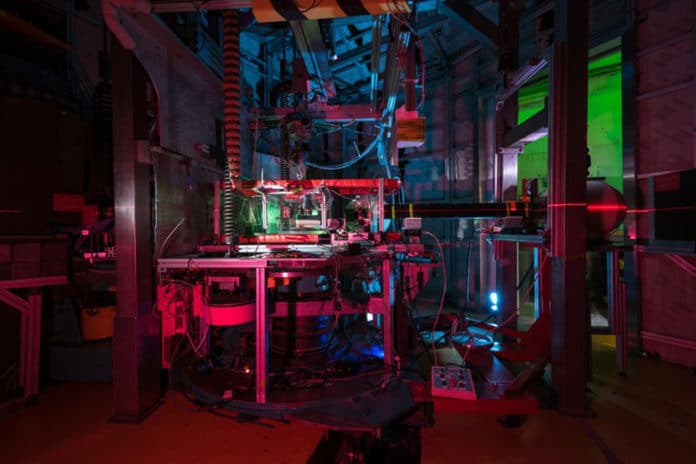Einstein’s theory of general relativity and quantum theory form the two major pillars of modern physics. However, specific inertial properties of a particle’s intrinsic spin are inconspicuous while the inertial properties of mass are well known.
Scientists in a new study performed a neutron interferometric experiment. They observed phase shifts arising as a consequence of the spin’s coupling with the angular velocity of a rotating magnetic field.
Scientists at TU Wien have recently conducted an experiment in which they observed the spin of a neutron traverses through a region with a rotating magnetic field.
For the experiment, they had developed a special kind of coil to generate this rotating magnetic field.
However, neutron spin does not carry any mass and can only be described quantum mechanically, it exhibits an inertial property.
Stephan Sponar of the Institute of Atomic and Subatomic Physics at TU Wien illustrates stated, “Inertia is a ubiquitous feature. When we sit on a train that moves at a constant speed, we cannot tell the difference to a train parked at the station. Only when changing the frame of reference, e.g., when jumping off the train, we are decelerated. We feel forces due to the inertia of our mass.”
Armin Danner, a lead author of the study, said, “When rotations are considered, things are similar: the angular momentum of a rotating object is conserved as long as no external torque is applied. But when considering quantum particles, things become more complicated: Particles like neutrons or electrons feature a special kind of angular momentum—the spin.”
Armin Danner said, “Spin is the intrinsic orbital angular momentum of an elementary particle. There are similarities to the rotation of a planet rotating about its axis, but in many regards, this comparison does not hold: the spin is a property of pointlike particles. With a traditional mindset, they cannot rotate about an axis.”
“Spin can be regarded as the angular momentum of an object which is constricted to a point. The properties of such a spin are not to be found in our everyday life. But the formalism of quantum mechanics can give us an intuitive idea of how things work for some cases.”
Prof. Yuji Hasegawa, head of the neutron interferometry group, explained, “Way back in 1988, colleagues already predicted how a neutron should behave when it is suddenly exposed to the rotation. A coupling between the neutron spin and a rotating magnetic field was predicted. But until now, no one could directly demonstrate this coupling in its quantum mechanical form. It also took us a few years of work and several attempts to do that.”
Like an artist who has spin and crosses a pivoting carousel, the neutron is presented to a rotating magnetic field. This field manipulates the turn, be that as it may, the spin orientations before and after the magnetic field are the equivalent.
After traversing the region with the magnetic field, the angular momentum of the neutron is equivalent to previously. The main thing that “occurred” to the neutron is that it experience impacts of latency, which are perceptible by methods for quantum mechanics.
In the experiment, the neutron beam is split into two separate partial beams. One of them is presented to a pivoting field while the other is unaffected. Both partial beams are then recombined. Observing the standards of quantum mechanics, the neutron travels along both paths simultaneously. Primarily, the impacts of inertia locally change the wavelength of the particle-wave. This decides how the fractional waves intensify and extinguish one another.
Armin Danner said, “It is fascinating that we induced a pure quantum effect which at first cannot be understood classically. Our intuition should, therefore, not help us here at all. But we could demonstrate for a particular case that the classical concept of inertia is still valid for the neutron spin.”
The study is published in npj Quantum Information.
